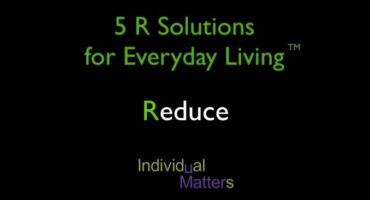This is the third segment in a series about executive functioning (EF): our “5 R Solutions for Everyday Living.” In this episode, we discuss how and why “Reduce” can alleviate problems with EF.
I love this R Solution because it can address all six clusters in Dr. Brown’s Model of Executive Functioning (Activation, Focus, Effort, Emotion, Memory, and Action)! The goal here is to help the student reduce to a single point of focus, which will help the student focus and sustain attention, prioritize, reduce overwhelm and frustration, activate with a starting and ending pointing, etc. There are so many strategies (too many to list in one short article) that really work…so I hope the takeaway is that when in doubt, reduce, reduce, reduce. Below is a list of 5 strategies that really work for students, parents, and teachers:
1. Set a timer and work on one task for a set amount of time. The amount of time will vary depending on the student and the task ,and you may have to experiment to identify the optimal number of minutes (could be 20 could be 55). This strategy reduces attention and productivity to a single point of focus, helps activate and prioritize, reduces stress and overwhelm, reduces load on working memory, chunks larger tasks, and provides a method for self-monitoring and time management. This can be especially useful for ”studying,” “practicing,” and completion of long-term projects. For example, if I say, “study your test.” What exactly does this mean? Setting a timer provides a quantitative measure for a qualitative task. It also promises relief (it will be over in 20 minutes) for mentally fatigued and exhausted students.
2. Declutter. Remove visual, auditory, and tactile clutter in the the learning environment, workspace, bag, folder, planner, desk, room, etc. If the mind is ”cluttered” or disorganized, the environment must be orderly. Also, if you notice increased clutter in the student’s space or belongings, it is a good indication they are overwhelmed.
3. Tighten up your Message: When giving instructions or directions, eliminate unnecessary and only loosely related information, words, and directives. In other words, talk less and stick to key actions and objects. Avoid overtaxing their working memory, diverting their focus, and overwhelming their senses.
4. Give Big Picture (or punch line) First. When giving instructions or directions provide a clear idea of where the activity is headed, when will it be done, and what is the point so that the student can focus on key details, prioritize, and maximize their worming memory capacity.
5. Set SMART Goals. SMART GOALS are Specific, Measurable, Attainable, Reasonable, and Time-specific. I love SMART goals because they help direct focus, break larger goals into smaller goals, set timelines, reduce overwhelm, and help students self-monitor progress. I also love setting SMART goals with students because the aspect of the SMART goal they struggle with, reveals their specific area of executive dysfunction. For example, if the goal is identified as “Work on my Science Project,” I might suspect this student has trouble prioritizing, planning, chunking, sequencing, and self-monitoring.
If you like these strategies, pick one or to work on this week, and see how they go for you. We recommend you don’t try all 5 at once. After all, the point of these is to reduce – not to overload yourself!
– Dr. Katen
©2021 Individual Matters, LLC. All rights reserved. Feel free to republish so long as credit is given.


 Ep. 2 – The 5 R Solutions for Everyday Living
Ep. 2 – The 5 R Solutions for Everyday Living